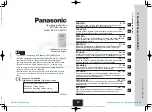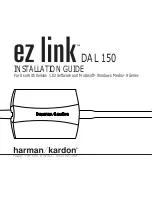
2.4 Function
4
5
6
7
8
9
10
11
0
20
40
60
80
10
0
OCl -
HOCl
HOCl %
pH
Fig. 2: HOCl/OCL equilibrium
-
The sensor for free chlorine CLB1 is a mem‐
brane-covered, two-electrode sensor. A gold
cathode acts as a working electrode and a
silver chloride anode acts as a counter elec‐
trode. After the sensor has been electrically
connected to the controller, there is constant
polarisation voltage on the electrodes.
The hypochlorous acid diffuses through the
membrane and depolarises the working elec‐
trode. The current flow (depolarisation current)
produced, which under constant conditions is
proportional to the concentration of the hypo‐
chlorous acid, is converted into a standard
output signal (4...20 mA) by the sensor elec‐
tronics and is displayed by the measuring
device/control device.
The equilibrium of the HOCI/OCI system
–
is
strongly pH-dependent. As can be seen from
Fig. 2 , the HOCI concentration decreases as
the pH value increases. At pH 7 the proportion
of hypochlorous acid (HOCI) in the free chlorine
is approx. 77 % and at pH 8 it is only 25 %. As
the sensor for free chlorine CLB1 only meas‐
ures hypochlorous acid, this leads to the meas‐
uring signal having a high pH dependency.
DPD 1 reagent solution is generally used to cal‐
ibrate the sensor for free chlorine CLB1. This
measuring method always measures the total
of HOCI and OCI
–
. Therefore the pH value has
to be held constant after the sensor has been
calibrated. Should the pH value have changed
more than ±0.2 since the last calibration, then
the sensor will have to be recalibrated. If the pH
value of the medium cannot be held constant, a
controller with automatic pH correction of the
chlorine signal should be used.
Functional Description
37
















































